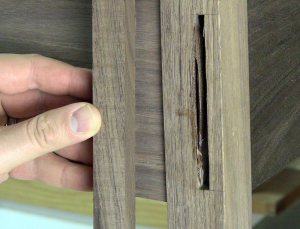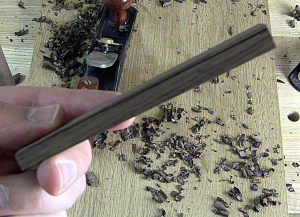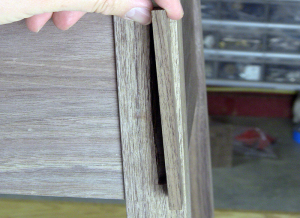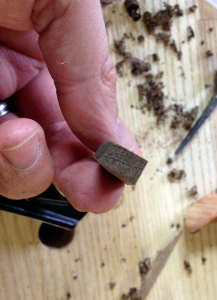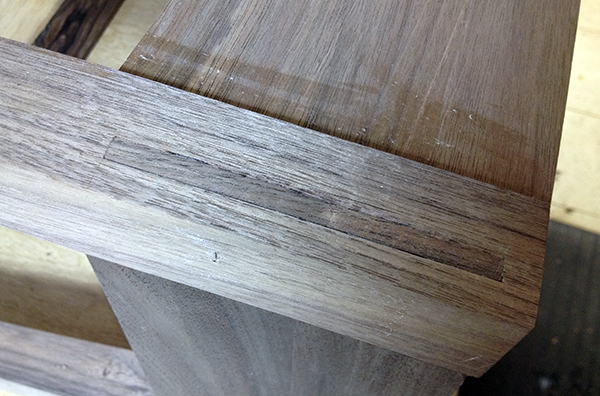Fixing an Accidental Through Mortise
There is a cliche out there about mastery coming not from a lack of mistakes but rather one’s ability to hide those mistakes. Based on the number of mistakes I make, I think I’m on the right path to mastery. I was chopping mortises the other day and had just sharpened my mortise chisel and switched over to Walnut after working in Afrormosia. The combination of softer wood and sharper chisel meant that I blew through the wood really fast and before I knew it I had a through mortise instead of the 1 1/2″ deep mortise I had intended to cut.
Not wanting a through mortise I resolved to plug the hole. Good stock selection is always helpful in fixing mistakes and since I had chosen nice rift sawn stock for the legs of this table, I had nothing but straight grain to work with which is easily matched. I grabbed an off cut from the same board I made the leg. This material is a little darker but still a good match. The grain however isn’t parallel to the edges and I’ll need to fix that.I used a scrub plane to bring one edge into parallel with the grain. Then I marked a line a bit heavier than the mortise on my plug stock to give me a reference line I could plane to.
Then I used the scrub plane to remove most of the wood and cleaned it up with a block plane to get a plug that is a hair bigger than the mortise and now with a matching grain pattern.
I used a block plane to slightly taper the side so the plug is narrower on the bottom. This allows me to insert the plug easily but it also gets tighter when it is hammered in thus closing up any gaps. Be careful here. Too much taper and you can split the leg when you hammer in the plug.
Mar 21, 2013 | Plugging a poorly placed mortise by RenaissanceWW on Keek.com
After the glue dried and I planed it flush here is my finished plugged mortise. I can clearly see the edges and I’m sure you can too. Now imagine you didn’t know it was there, several coats of finish have been applied, and this plug is either behind a drop leaf or in deep shadow at waist height when the table leaf is raised.
I like to call that “selectively invisible”
How About You?
Got any good tips for fixing botched joinery? Help the rest of us on our road to mastery by sharing your experience in the comments below.


